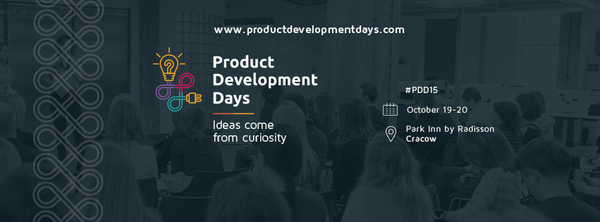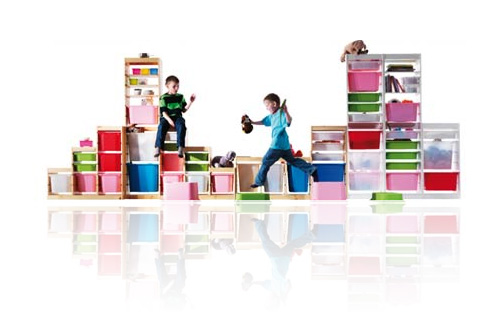Paul Chen
The first conference for product developers and designers, Product Development Days, was held on October 19-20, 2015 in Krakow. Hundreds of product developments professionals and enthusiasts from corporations and startups gathered to be mentored and inspired by experts in their fields.
Here are 6 things I learned from it:
Product designers give product developers something to build.
These days, developers get a lot of glory as they are in big demand and they are building wonderful websites, applications, and software. However, many people forget that it is the designers who gets the ball rolling. It’s like giving the wide receiver all the credit for the touchdown or giving the striker the glory for the goal. While they actually score the point or points, it is the quarterback who threw the ball or the mid-fielder or the forwards who placed the ball in the optimal spot. Therefore, the designer has to make sure all the functionalities are in the right place and the interface needs to be aesthetically pleasing so the user experience will not be painful. Therefore, it is essential that the designer and the developer must work in perfect unison.
Do not outsource the entire product development process.
It is easy to have an awesome idea but what if you are not a technical person? If you are successful in putting together a solid business plan with all the bells and whistles meaning you are able to answer all the curveballs the VCs will throw at you well enough to get the funding. There are actually VCs and accelerators that will fund idea stage projects. You might decide to hire a product designer then an army of developers. If you are into hardware, you will outsource the manufacturing to China or something. According To Blazej Marciniak of Sher.ly , That is probably a bad idea. By outsourcing the entire process, you lose control of the project. Sometimes, the design is impossible for the developer. Sometimes, the hardware ordered does not fit together well or they don’t work at all. It is most recommended that you have most parts of the product development done in-house.
Piotr Wilam from Innovation Nest, in his keynote, was quite disconcerted by the lack of beauty in Polish products. Polish products often just work well enough. He wants Polish products to be more sexy and elegant. Poland has wonderful developers, but lacks wonderful designers. There is a great need for a product guy or girl to be a co-founder at a startup. Polish startups needs to start thinking about the user as their person to please. Good design is not a luxury but a necessity.
Sometimes for a corporation to be successful, they might need to have a startup develop internally.
In Poland it is not even an idea in corporations yet, but in the US it has been happening for a while. Some of the most innovative products are developed by internal people who are given a chance to be creative and think freely. In Google, Gmail started as an independent project. Playstation was the same for Sony, and Adobe from Xerox. Facebook is known to give their employees days off to tinker around and start personal projects. In fact, the basis for the successful TV show, Silicon Valley is where Richard Hendricks developed Pied Piper while working for Hooli. Sometimes, if you know something too well, it is hard to innovate.
Building a product for kids is different from building a product for adults.
When you build a product for kids, you need to be able to elicit an emotional response. Kids like to have fun but they also like to have challenges. However, you cannot build a product that is too difficult or too scary for them. And they have very short attention spans. As a result they need to be constantly engaged. A big difference is that you must be able to market to both the kids and the parents. The parents want to know that they are giving their kids something educational or that they are contributing to the development of their child. Getting the parents to trust you is half the battle. And you cannot skimp on the artwork. Bad artwork will not engage the kids because they know when something looks cheap.
Design things to be easy for users
In order for a product to add value, it has to address a common problem in the life of a person or a professional. It is even better if that problem has a pain point. If you are able to develop a product to make that pain disappear then people will be engaged. Getting them to want to pay money for it is every entrepreneur's goal. You want people to feel good and intelligent for buying it. If you are buying it for someone, you want to look like a superhero for providing the solution. However, if you make it a hassle to use it, you not only lose a customer, you’ve made an enemy. Alibaba is successful because they make things easy for both the seller and the customer to do business.
Getting a product from a idea to reality is easier than ever. However, it also means that the competition is even greater. So it is those who can adapt, design, and develop awesome products that will be the difference between the prince and the pauper.
Thank you for reading another one of my posts done for you! If you liked what you read please share it by using one of the buttons below and check out other posts in this blog. I don’t want you to miss out on future posts so please follow me on Twitter @Eurodude23. If you haven’t done it already, please like my Facebook fan page by clicking here! And if you like the content you have read, and are looking for a content writer for your team please go to www.contentfarm.org for details. See you next time!








No comments:
Post a Comment